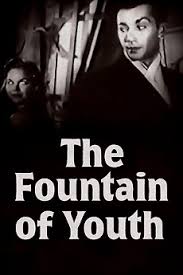
Dr. Humphrey Baxter (Dan Tobin) is a scientist working on gland research. He has plans to work with a college in Vienna but before he goes, he spends the evening at the theater with friends, Albert and Stella Morgan (Billy House and Nancy Kulp). The leading lady in the production was Caroline Coates (Joi Lansing). Baxter meets and falls in love with Caroline, and she falls for him. The two decide to get married, but first Baxter must fulfill his commitment in Vienna.
Baxter spends three years in Vienna working on his research. Caroline has been offered a part in what will be a smash hit, so she stays behind. While he is away Caroline ends up falling in love with tennis star, Alan Brody (Rick Jason). By the time Baxter returns, Caroline and Alan are already married. Baxter is devastated but pretends that he is happy for the couple. Then he tells them about his trip to Vienna.
Baxter had been working with a famous scientist named Vingleburg to develop a serum that would extend human life and maintain one’s youthful appearance for decades. According to Baxter, there were three doses of the miracle serum created, one for Vingleburg, one for Baxter, and a third. Baxter tells the couple that he is giving the third dose to them. There is one catch. The third dose cannot be split. Only one person can take it. The couple must decide which one will have youth while the other grows old.
“The Fountain of Youth” was released in 1958 and was directed by Orson Welles. It was a backdoor television pilot as a proposed Desilu Productions anthology series that was never produced. The pilot was based on a short story by John Collier, “Youth From Vienna”, and was narrated onscreen by Welles. The story was episode five of season one of Colgate Theater. It was produced in 1956 but not aired until 1958. It was aired only once.
The episode received a Peabody Award for 1958. It was the only unsold television pilot ever to receive the honor.
The pilot was directed, written and narrated by Orson Welles. He did a wonderful job, but I can’t help but believe that Welles liked his performance because, well, there’s nothing that Orson Welles likes more than the sound of his own voice. The pilot is a sort of Orson Welles soliloquy, a kind of refined word salad. He is on screen longer than any of the actors. Technically, that’s Desi Arnez’s fault. He conceived of the series and convinced Welles to participate.
Not to disparage the pilot, it is actually a rather artistic endeavor that was made before its time. The narration is in the first person singular and sprinkled with humor. The story is done using narration, stills and live action film. Granted, there isn’t anything new here, but the way it was put together was visually a little different than most horror stories. It was interesting and a bit quirky.

